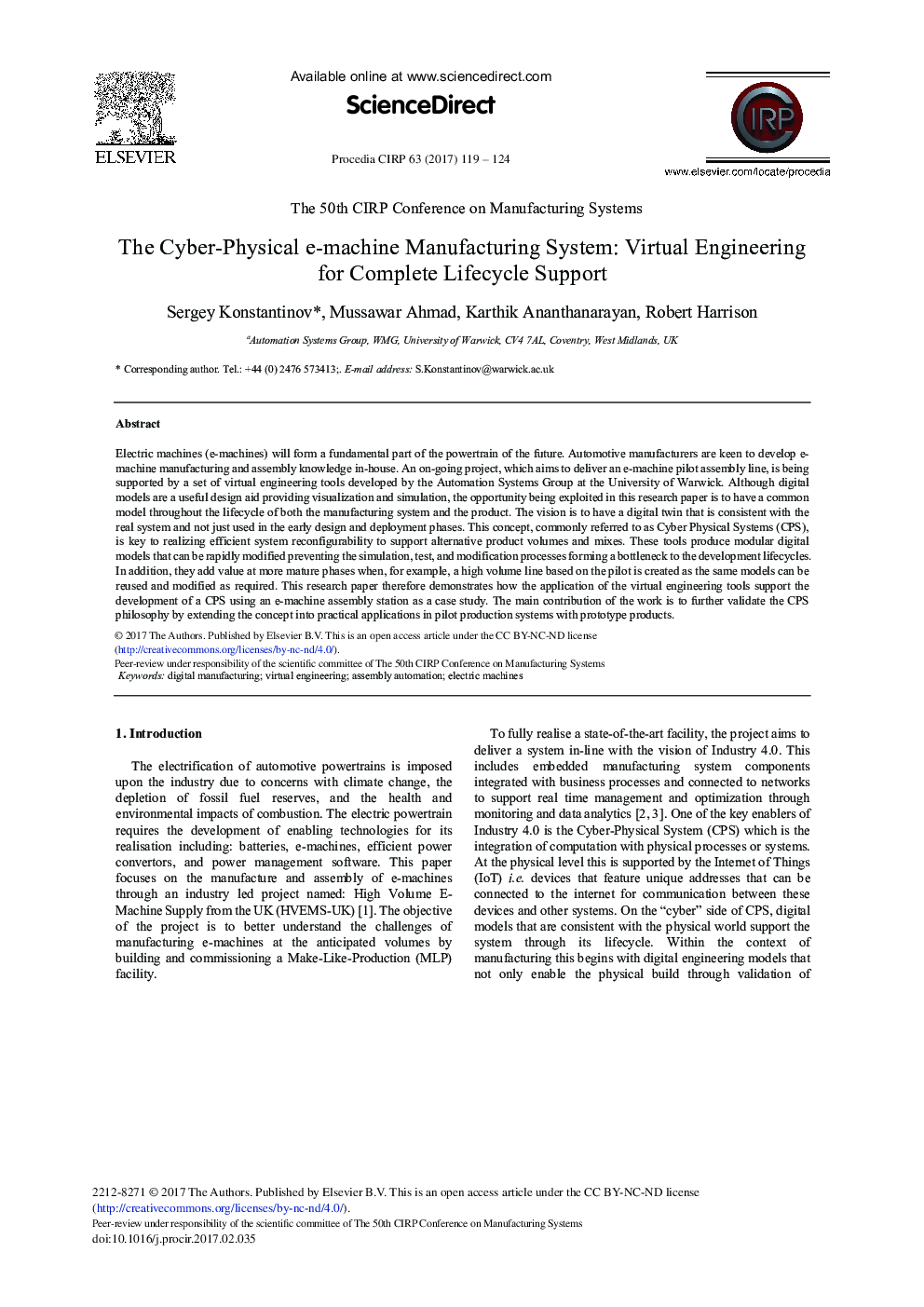| Article ID | Journal | Published Year | Pages | File Type |
|---|---|---|---|---|
| 5470134 | Procedia CIRP | 2017 | 6 Pages |
Electric machines (e-machines) will form a fundamental part of the powertrain of the future. Automotive manufacturers are keen to develop e-machine manufacturing and assembly knowledge in-house. An on-going project, which aims to deliver an e-machine pilot assembly line, is being supported by a set of virtual engineering tools developed by the Automation Systems Group at the University of Warwick. Although digital models are a useful design aid providing visualization and simulation, the opportunity being exploited in this research paper is to have a common model throughout the lifecycle of both the manufacturing system and the product. The vision is to have a digital twin that is consistent with the real system and not just used in the early design and deployment phases. This concept, commonly referred to as Cyber Physical Systems (CPS), is key to realizing efficient system reconfigurability to support alternative product volumes and mixes. These tools produce modular digital models that can be rapidly modified preventing the simulation, test, and modification processes forming a bottleneck to the development lifecycles. In addition, they add value at more mature phases when, for example, a high volume line based on the pilot is created as the same models can be reused and modified as required. This research paper therefore demonstrates how the application of the virtual engineering tools support the development of a CPS using an e-machine assembly station as a case study. The main contribution of the work is to further validate the CPS philosophy by extending the concept into practical applications in pilot production systems with prototype products.
